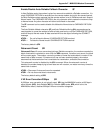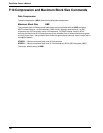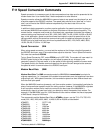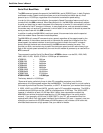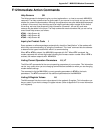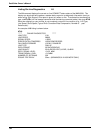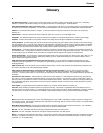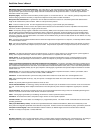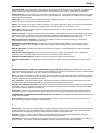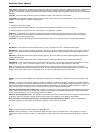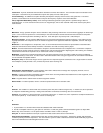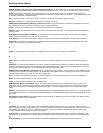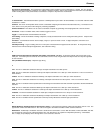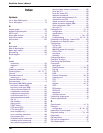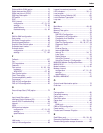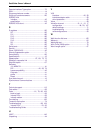
151
Glossary
Synchronous Transmission: The transmission of data which involves sending a group of characters in a packet. This is a common
method of transmission between computers on a network or between modems. One or more synchronous characters are transmitted to
confirm clocking before each packet of data is transmitted. Compare to Asynchronous Transmission.
T
T1 Transmission: A standard transmission speed of 1.544M bps that may be used in its full bandwidth, or as narrower channels called
"fractional T1" carriers.
Terminal: The screen and keyboard device used in a centralized computing environment for interactive data entry. Terminals have no
"box", which is to say they have no file storage or processing capabilities.
Terminal emulation: This allows a PC to access a mainframe computer by generating and accepting data like a "dumb" terminal.
Threshold: A value or condition which, when reached, triggers an event.
Toggle: To alternate back and forth between two states.
Tone dialing: One of two methods of dialing a telephone, usually associated with Touch-Tone® (push button) phones. Compare with
pulse dialing.
Transistor: A semiconductor device used to amplify a signal, or open and close a circuit. In digital computers, it functions as an
electronic switch.
Twisted pair wiring: A type of cabling with one or more pairs of insulated wires wrapped around each other. An inexpensive wiring
method used for LAN and telephone applications, also called UTP wiring.
U
UART (Universal Asynchronous Receiver/Transmitter) (pronounced "you art"): A chip that transmits and receives data on the
serial port. It converts bytes into serial bits for transmission, and vice versa, and generates and strips the start and stop bits appended
to each character.
UTP (unshielded twisted pair): Telephone-type wiring.
V
V.21: The ITU-T modulation standard for 300 bps, full-duplex transmission over dial-up lines.
V.22: The ITU-T modulation standard for 1200 bps, full-duplex transmission over a dial-up or 2-wire leased line. This is not common in
North America.
V.22bis: The ITU-T modulation standard for 2400 bps, full-duplex transmission over a dial-up or 2-wire leased line.
V.23: The ITU-T modulation standard for 75/1200 bps, half-duplex transmission over dial-up lines. This is not common in North
America.
V.24: The ITU-T hardware interface specification for interchange circuits between the DTE and DCE. Equivalent to the EIA/TIA RS-232
standard.
V.32: The ITU-T modulation standard for 9600 bps, full-duplex transmission over a dial-up or 2-wire leased line.
V.32bis: The ITU-T modulation standard for 14,400 bps, full-duplex transmission over a dial-up or 2-wire leased line.
V.32terbo: The AT&T modulation standard for 19,600 bps, full-duplex transmission over a dial-up or 2-wire leased line.
V.34: The ITU-T modulation standard for 28,800 bps, full-duplex transmission over a dial-up or 2-wire leased line.
V.35: The ITU-T hardware interface specification commonly used by DSU/CSUs and other high-speed devices.
W
WATS (Wide Area Telephone Service) (pronounced "watts"): A discounted long-distance calling plan that allows calls in or out. The
popular 800 numbers are WATS lines in. The calls are charged to the holder of the 800 number at a discounted rate.
Workstation: Traditionally a workstation has been a dumb terminal connected to a host. With the advent of LANs and WANs, PCs that
are connected to a LAN are now called workstations also, even though they are capable of independent processing. A workstation,
then, is simply an input/display device through which a user accesses a resource.



